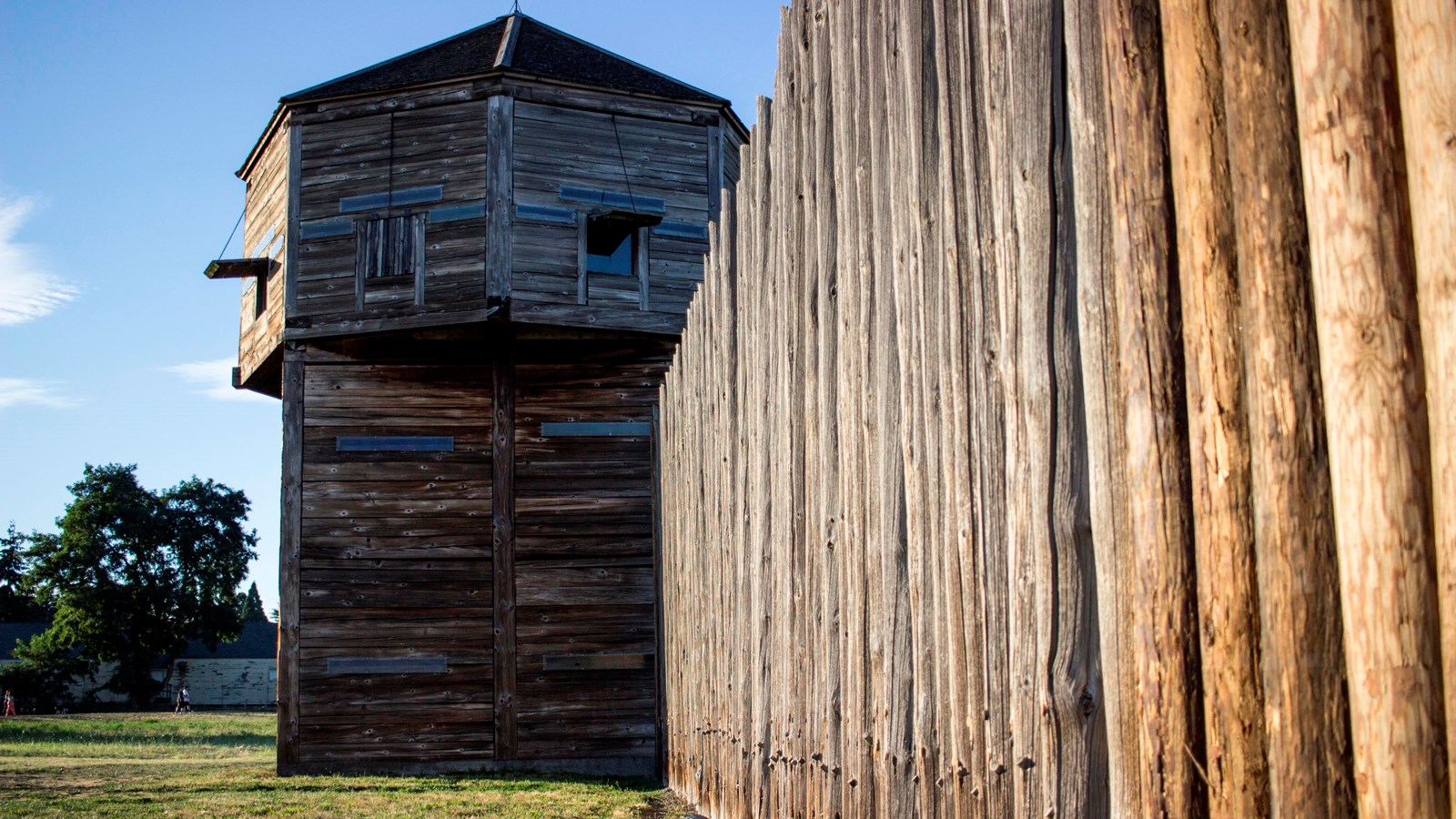Last updated: September 8, 2020
Place
Fort Vancouver

NPS Ph
Accessible Sites, Automated External Defibrillator (AED), Baby Changing Station, Benches/Seating, Bicycle - Rack, Entrance Passes For Sale, First Aid Kit Available, Historical/Interpretive Information/Exhibits, Information, Information - Maps Available, Information - Ranger/Staff Member Present, Parking - Auto, Parking - Bus/RV, Restroom, Restroom - Accessible, Scenic View/Photo Spot, Toilet - Flush, Trash/Litter Receptacles, Water - Bottle-Filling Station, Water - Drinking/Potable, Wheelchair Accessible, Wheelchairs Available
Fort Vancouver was established on the north bank of the Columbia River in the winter of 1824-1825. It was originally built on the bluff overlooking today’s location of the reconstructed fort, approximately in the current location of the Washington State School for the Deaf. In 1829, that original fort was torn down and rebuilt on the plain where the reconstruction is now located. Fort Vancouver served as the administrative headquarters and supply depot for the Hudson’s Bay Company’s vast network of fur trading forts in its “Columbia Department.” This Columbia Department included the modern-day states of Washington, Oregon, and Idaho, parts of Montana, Northern California, British Columbia, and the southern parts of Alaska.
The people who lived at Fort Vancouver included the fort’s officers and their wives and families, including Chief Factor Dr. John McLoughlin and Chief Trader James Douglas. This “gentleman” class included about 30 people, who lived inside the fort. The population of the fort included a large working class, which could grow to hundreds of people living in the Village when fur brigades were in. These individuals worked at the fort as carpenters, coopers, blacksmiths, bakers, and more. They were also fur trappers and traders.
The people who lived at Fort Vancouver were part of a diverse community. Hudson’s Bay Company employees came from across the country and around the world. Over 25 American Indian tribes were represented in the population that lived here, on the ancestral homelands of the Cowlitz and Chinook peoples. Fort Vancouver’s employees were also French-Canadian, Irish, English, Scottish, and Métis. In the 1840s, Fort Vancouver was home to the largest population of Native Hawaiians outside of the Hawaiian Islands; these workers also came here to find economic opportunity, and while some returned to the islands, many made a new home in the Pacific Northwest.
Through the 1830s and 1840s, the fort’s power and influence in the Northwest grew. When American settlers began to cross the Oregon Trail in the 1840s, the fort became a resupply stop for newcomers to the region.
The decision to build the fort on the northern side of the Columbia River had been made in part because the fort’s leaders, including McLoughlin, hoped that the river would eventually become the boundary between United States and British Canada. However, the Oregon Treaty of 1846 set the boundary between the United States and Canada at the 49th parallel, and placed the fort inside US territory. In 1849, the US Army established Vancouver Barracks directly adjacent to the fort. The Army and the Hudson’s Bay Company coexisted, weathering some conflicts, through the 1850s. Then, in 1860, the Company abandoned the fort and moved their operations to British Columbia. The original fort was destroyed by fire in 1866.
In 1947, the National Park Service, spurred by community interest in commemorating Fort Vancouver, sent archaeologist Louis Caywood to locate the site of the original fort. Caywood was successful, and subsequent archaeological excavations revealed the locations of other fort structures. Today’s reconstructed Fort Vancouver is located on the archaeological footprint of the fort that stood there from 1829-1866.
The reconstruction of Fort Vancouver began in the 1970s. While not every building has been rebuilt, the reconstructed fort is a recreation of what the fort looked like in the year 1845.
